The Economic Pandemic
Aggressive Testing Is Vital to Controlling the Spread of COVID19 and Saving Europe’s Economy
By Duane Schulthess, Gergana Koleva, Anja Schiel, Harry P. Bowen, and Luca Pani
April 8, 2020
For the last month, a debate has raged over which approach to managing the spread of COVID-19 is correct. One aspect of this debate is about the efficacy of widespread testing.
South Korea and Germany have pursued aggressive testing. The Netherlands, Sweden, and the UK – at least initially – limited testing and instead sought to create herd immunity by letting the virus run its course. Which approach is better?
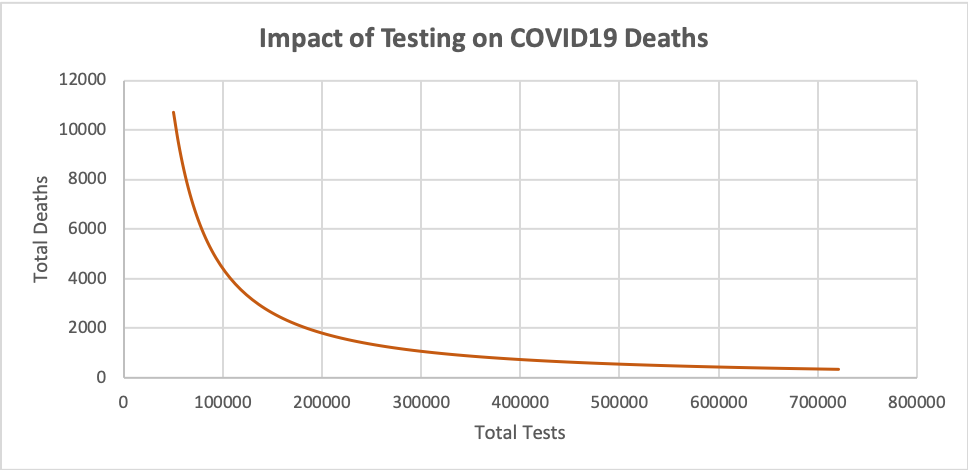
Figure 1 – Regression Model Output Explaining Impact of Testing on Natural Log of Total Deaths, p < 0.0001
Given the implications of getting the choice wrong, opinions towards both approaches have been strong and vociferous.
Adding to the confusion, experts disagree about which of many variables are more important for explaining higher rates of morbidity from COVID19. These include the percent of a population over 65 years of age, the case fatality rate, the population density of a region, the availability of hospital beds and ventilators per 1000 population, rates of tourism, usage of public transport, and number of university students in a given area to name a few.
Vital Transformation ran a series of statistical regressions (See Appendix) using these variables to uncover the impact each has on deaths from COVID19, weighted for population. The estimated relationship explained 86% of the variability in deaths, with three variables showing high statistical significance: ‘Number of Tests’ (p < 0.0001), total ‘Confirmed Cases’ (p < 0.0001), and ‘Population Density per Km2’ (p < 0.0001). [1],[2]
To assess the impact of each variable, our model was re-estimated with the key variables measured by their natural logarithm (Figure 1). In doing so, the coefficient on each variable will indicate the percentage change in deaths for each 1% increase or decrease in value. For example, by increasing the number of tests by 1%, we find a decrease in deaths by 0.56%. This implies that those countries which proactively test and isolate identified carriers of COVID19 will better manage their case fatality rate (CFR), i.e. deaths per number of confirmed cases.
As of April 1st, Germany’s CFR is 1.1% and South Korea’s is 1.8%. Both countries committed early to aggressive testing regimes and both are viewed as successfully managing the spread of COVID19.
In contrast, Italy’s CFR is 12.6% and Spain’s is 9.4%. Neither country has, until recently, aggressively promoted testing. Similarly, the Netherlands has maintained a policy to not aggressively test nor lock down its population; its CFR is 8.2%, gaining 1 percentage point over the last 6 days.
The False Economy of Not Testing
Many governments have opted to close borders, shutter schools and restrict travel, but have not committed to investing in robust RT-PCR testing for active COVID19, or antibody tests showing previous exposure. According to the International Monetary Fund, “Nonessential services closed by government decree account for about one-third of output. This means that each month these sectors remain closed translates into a 3 percent drop in annual GDP.”[3]
This translates into roughly €50 billion of lost GDP per month in both Spain and Italy, or €1.75 billion per day.
From a health economics standpoint, assuming €40,000 per Quality Adjusted Life Year (QALY), this means that Italy’s current strategy is costing €50 billion a month to ‘buy’ 16,847 QALY and “gain” €675 million. This, frankly, is unsustainable.
Shutting substantial portions of the global economy to reduce the spread of COVID19 will only work if we invest heavily to increase our ability to manage the disease and open up our economies as soon as is possible.
Germany is testing 500,000 people a week.[4] Assuming a cost of $45 (€40) per test and that our statistical model is robust, Germany will save roughly 2,500 lives per week at a total cost of € 20 mil. If Germany’s testing regime contains the economic impact of COVID19 to 1% of GDP, as opposed to 3% of GDP as cited by the IMF, they will not only be saving lives but also tens of billions of euros in GDP per month.
Until recently, Italy was only testing those who presented symptoms, but has since ramped up its testing to play catch-up with the rate of infection. This decision was made in part due to the positive result of a pilot study in the city of Vo initiated on March 6th, whereby the Red Cross successfully tested and segmented the city’s entire population, eradicating COVID19 in 14 days.[5]
This Italian experiment validates the approach taken by Germany, showing that mass testing and focused isolation of confirmed COVID19 cases to be a more effective strategy than large-scale quarantine to manage both COVID19 spread, as well as its economic impact. Conversely, those with a lax testing regime can expect both substantially higher fatalities and larger negative impact to their GDP.
[1] Full dataset is available for download at this link: https://1drv.ms/x/s!AlGuTWbx7xz9-gtAIBzdcJDv2SKD?e=9cMI6M
[2] Population Density per KM2 is only responsible for answering 9% of the model’s variability; ‘Number of Tests’ and ‘Confirmed Cases’ answer 66% of the variability of our population weighted model and 82% in our Log Natural model.
[3] https://blogs.imf.org/2020/03/30/europes-covid-19-crisis-and-the-funds-response/
[4] https://www.euronews.com/2020/03/27/germany-increases-its-covid-19-tests-to-500-000-per-week
Biography
Duane Schulthess, MBA, is the Managing Director of the consultancy Vital Transformation. Previously, he was the EMEA Head of Corporate Development of The Wall Street Journal, and Commercial Director of Science|Business. He is a Senior Associate of the UK’s Royal Society of Medicine.
Gergana Koleva is a Project Manager at Vital Transformation and a senior writer for Cardiology2.0. She holds a M.Sc. in health policy and management from the Harvard T. H. Chan School of Public Health and an M.A. in journalism from New York University. She has served as an advisor at the World Health Organization.
Dr. Anja Schiel is the Senior Advisor and Statistician for Norwegian Medicines Agency. She holds a PhD from the Free University Amsterdam and is the European Medicines Agency’s Chair of the Biostatistics Working Party.
Dr. Harry P. Bowen is Professor of Economics and International Business, and W.R. Holland Chair of International Business and Finance, at the McColl School of Business at Queens University of Charlotte (USA).
Dr. Luca Pani is a Professor of Psychiatry at the University of Miami and a Professor of Pharmacology at the University of Modena and Reggio Emilia, Italy. He served as Director General of the Italian Medicines Agency from 2011 to 2016. He was also previously a member of the Scientific Advice Working Party of the European Medicines Agency.
Appendix
Model 1
Fit
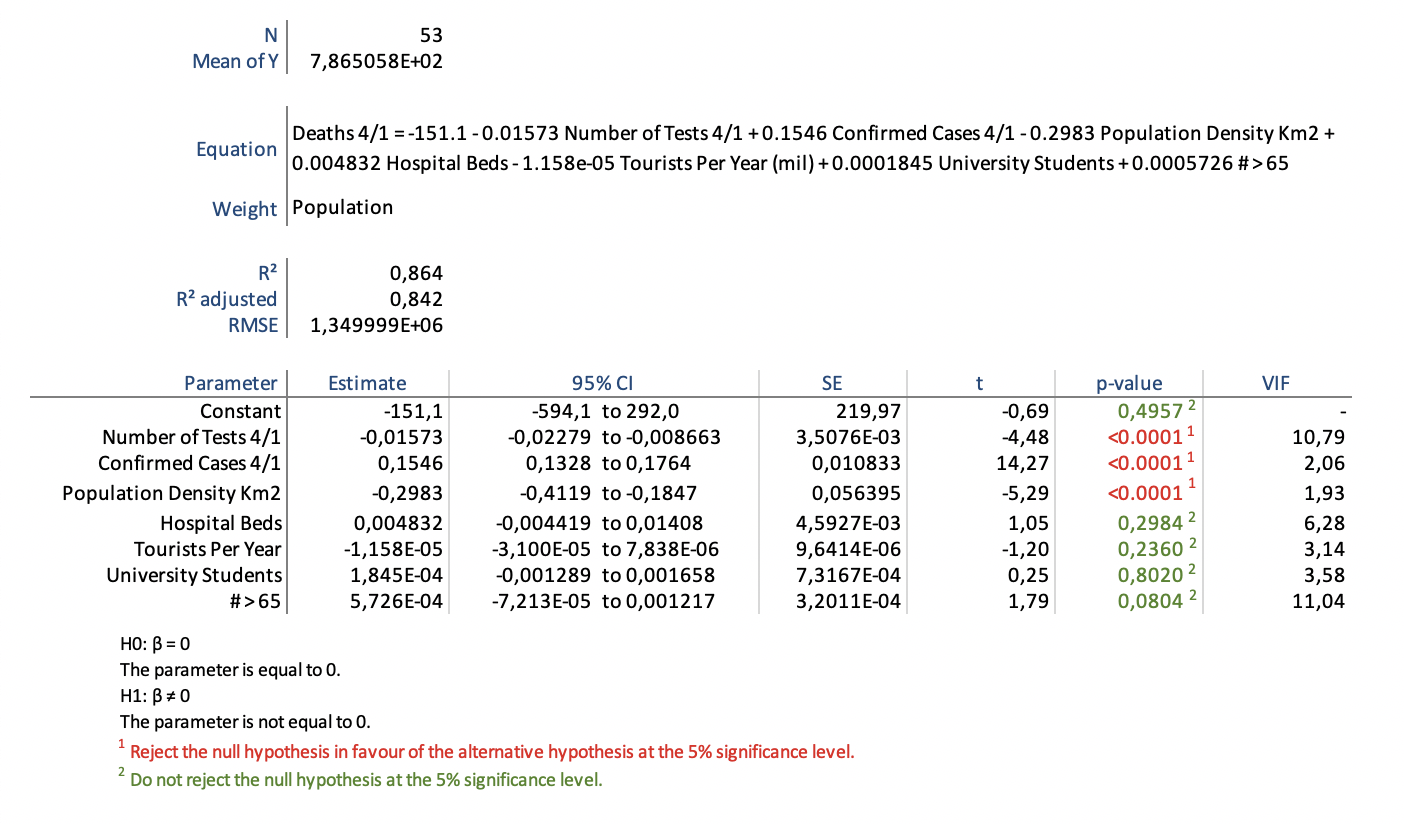
Effect of the Model
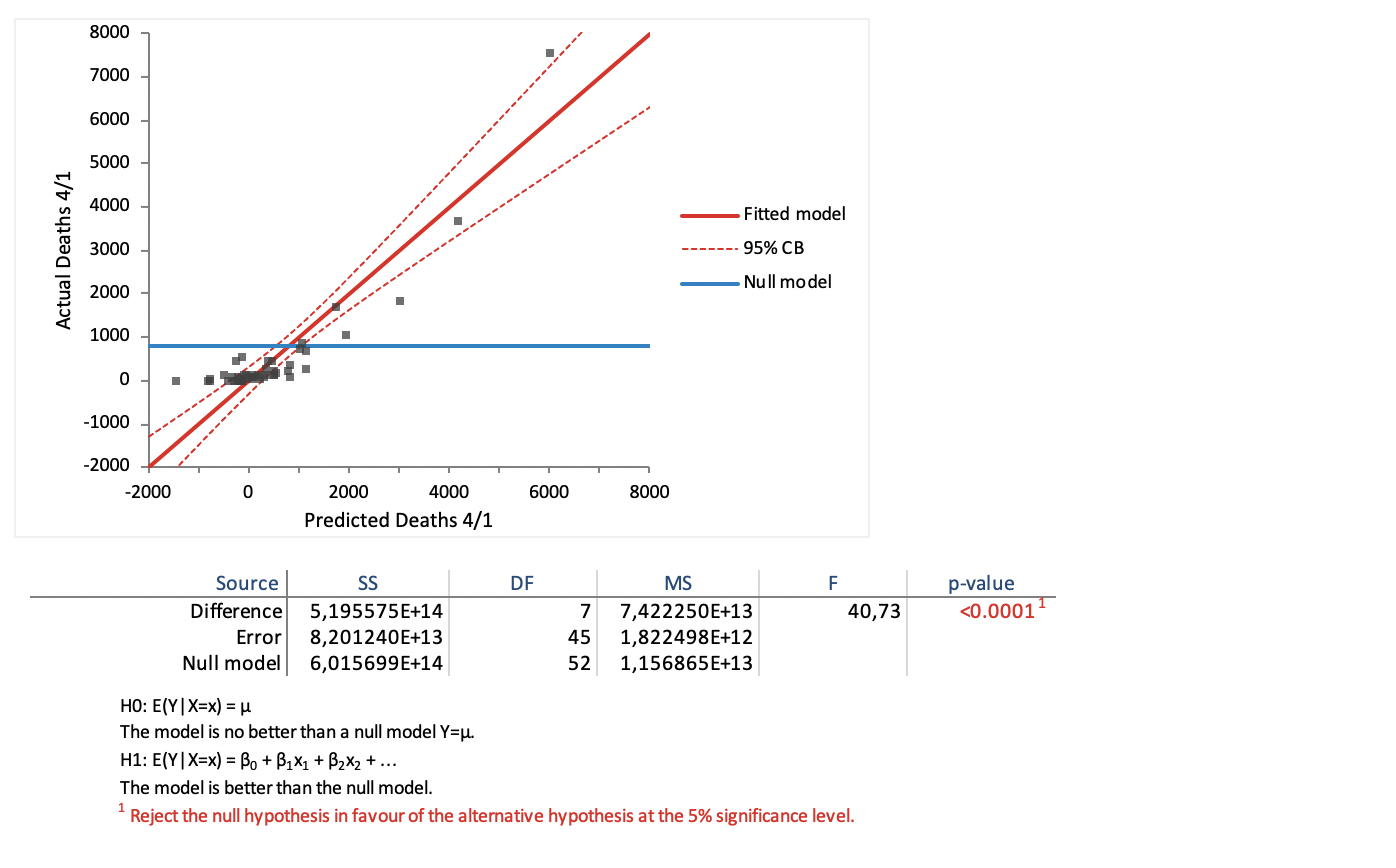
Model 2 Log Natural
Fit
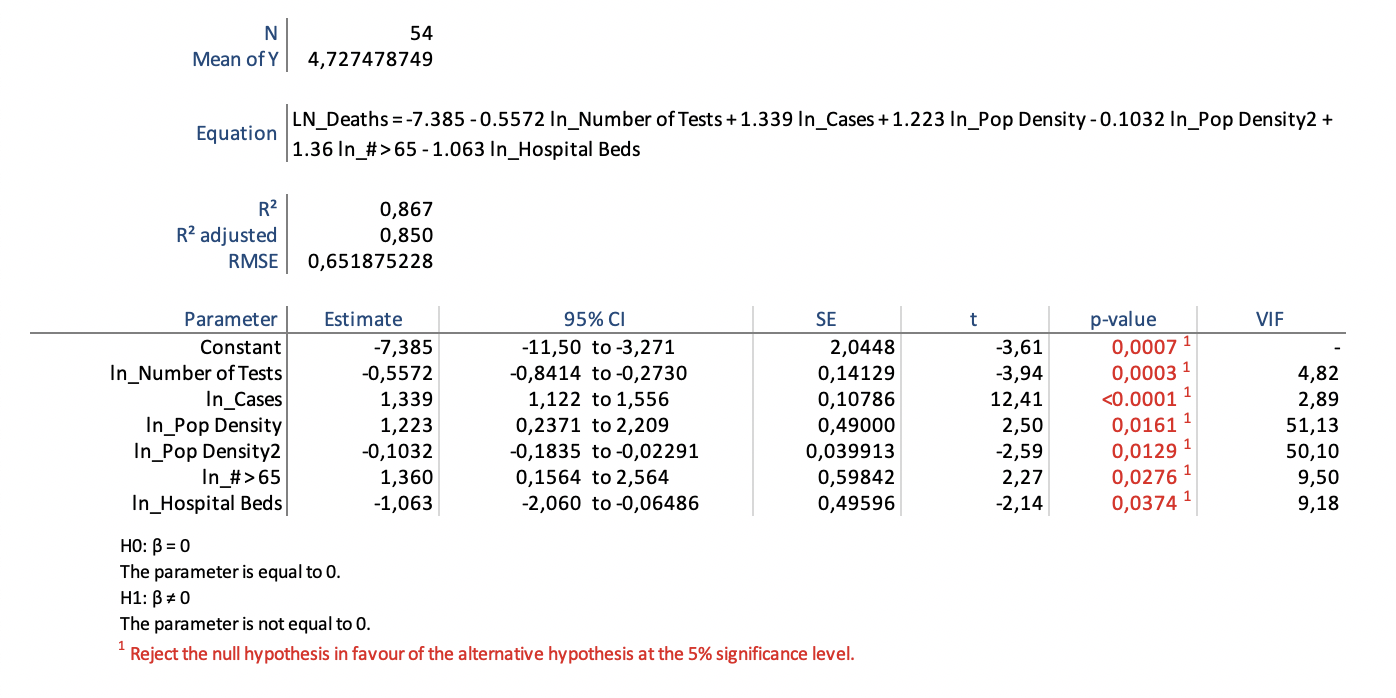
Effect of the Model
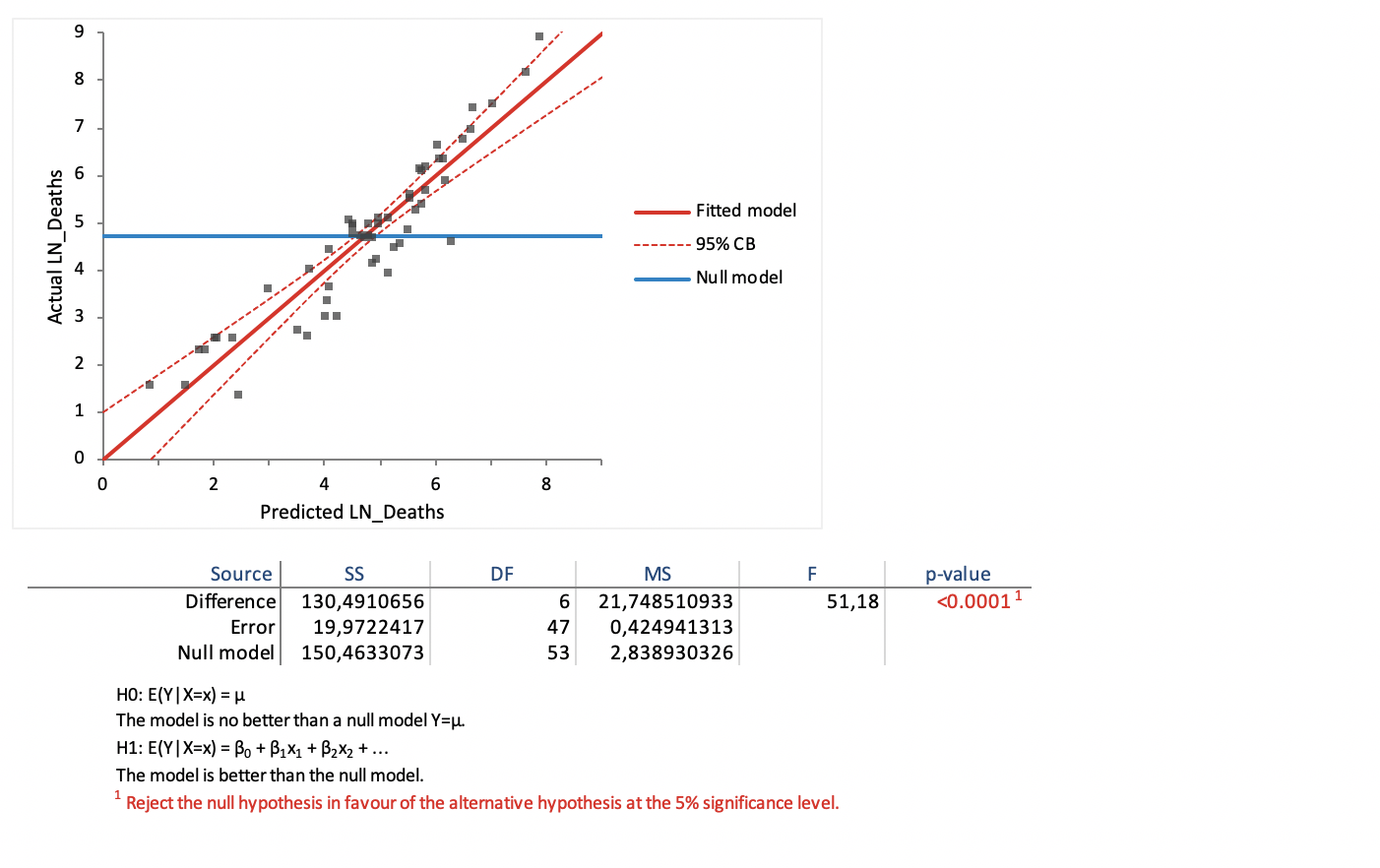
Click here to download the report
Full dataset is available for download at this link: https://1drv.ms/x/s!AlGuTWbx7xz9-gtAIBzdcJDv2SKD?e=9cMI6M


